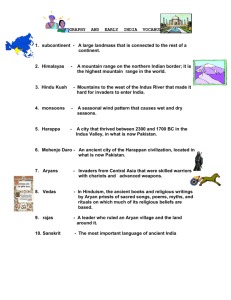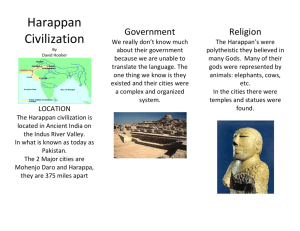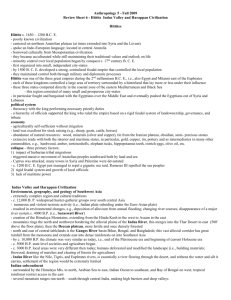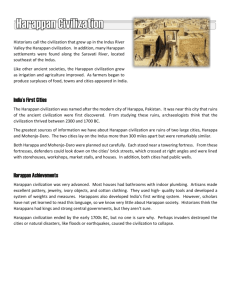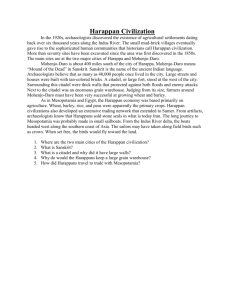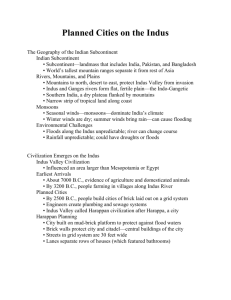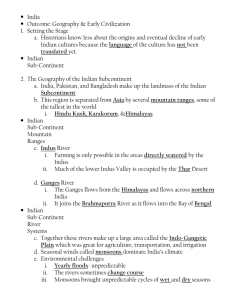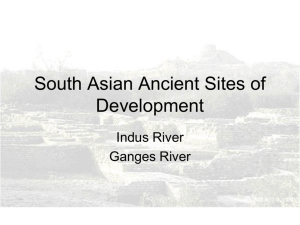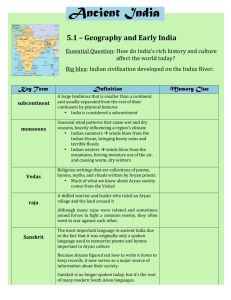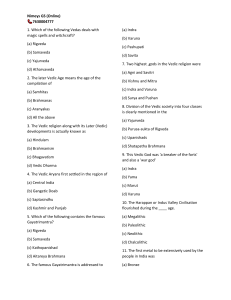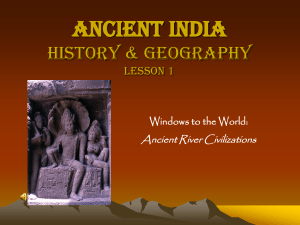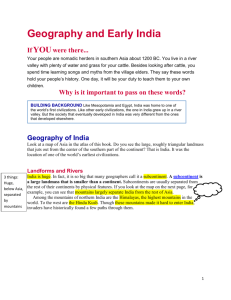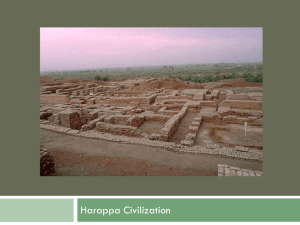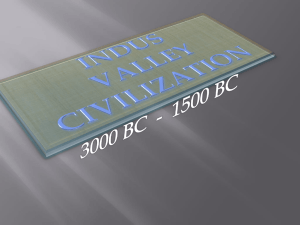INTRODUCTION TO ANCIENT INDIA The first civilizations arose
advertisement
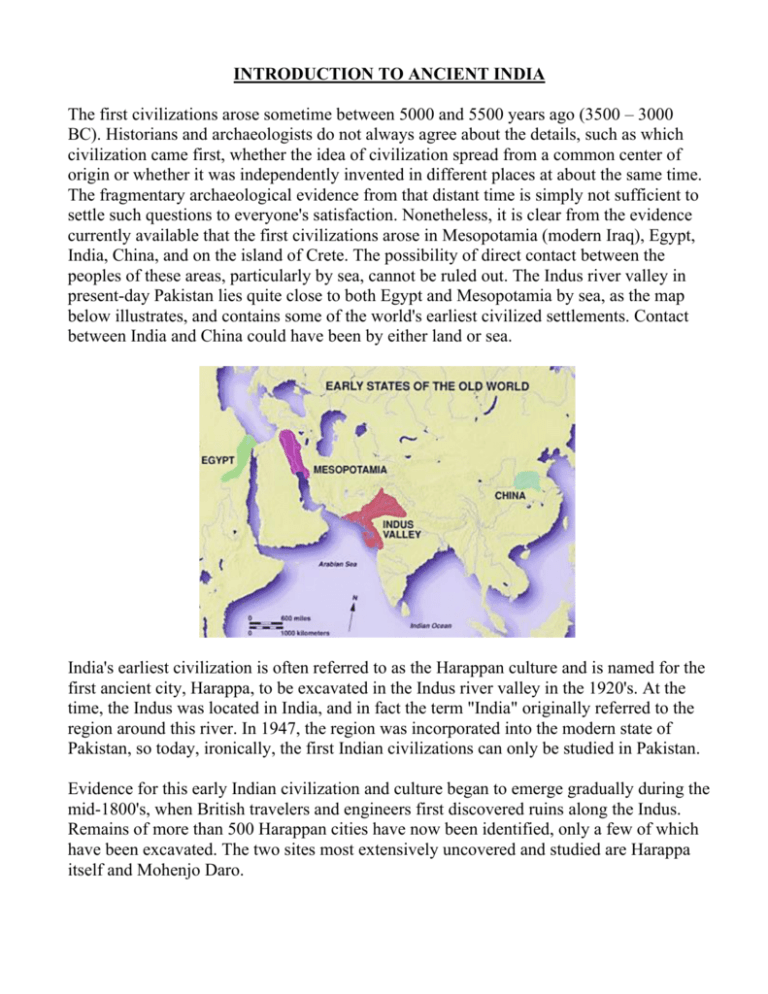
INTRODUCTION TO ANCIENT INDIA The first civilizations arose sometime between 5000 and 5500 years ago (3500 – 3000 BC). Historians and archaeologists do not always agree about the details, such as which civilization came first, whether the idea of civilization spread from a common center of origin or whether it was independently invented in different places at about the same time. The fragmentary archaeological evidence from that distant time is simply not sufficient to settle such questions to everyone's satisfaction. Nonetheless, it is clear from the evidence currently available that the first civilizations arose in Mesopotamia (modern Iraq), Egypt, India, China, and on the island of Crete. The possibility of direct contact between the peoples of these areas, particularly by sea, cannot be ruled out. The Indus river valley in present-day Pakistan lies quite close to both Egypt and Mesopotamia by sea, as the map below illustrates, and contains some of the world's earliest civilized settlements. Contact between India and China could have been by either land or sea. India's earliest civilization is often referred to as the Harappan culture and is named for the first ancient city, Harappa, to be excavated in the Indus river valley in the 1920's. At the time, the Indus was located in India, and in fact the term "India" originally referred to the region around this river. In 1947, the region was incorporated into the modern state of Pakistan, so today, ironically, the first Indian civilizations can only be studied in Pakistan. Evidence for this early Indian civilization and culture began to emerge gradually during the mid-1800's, when British travelers and engineers first discovered ruins along the Indus. Remains of more than 500 Harappan cities have now been identified, only a few of which have been excavated. The two sites most extensively uncovered and studied are Harappa itself and Mohenjo Daro. After about 1500 years, India's Harappan culture collapsed (c.1700 BC). The reasons for this collapse are unclear, but prominent theories involve climate change unfavorable to agriculture and changes to the Indus river system itself, possibly due to geological changes. Some aspects of Harappan culture, however, appear to have left their mark on later Indian civilizations. Harappan culture was followed by the so-called Vedic Civilization, which lasted to around 600 BC. It too was centered in western India (now Pakistan), somewhat north of the cities of the Harappan culture. This region lies on the eastern edge of the Hindu Kush mountains and near a historically important gap in the mountains called the Khyber Pass (3500 feet altitude) which leads westward into Afghanistan. It is believed that the founders of Vedic culture, sometimes called Indo-Aryans, may have been invaders from the west who entered India through the Khyber Pass. They are credited with laying the foundations of India's principal religion today, Hinduism, and with developing Sanskrit, the language of classical Indian literature. It was this language, in fact, which is related to western languages like Latin and Greek, which first suggested the theory that these Indo-Aryans may have been invaders from the west. Around 500 BC, toward the end of the Vedic era, a royal prince from a small kingdom in northeast India, named Siddhartha Gautama, set out on a personal quest to discover the cause of human suffering. His quest laid the foundations of a new religion, Buddhism, and he himself would become known as the "Buddha" or "the Enlightened One." Buddhism subsequently spread from India to China and Japan, and eventually to the rest of the world. Today, there are at least 400 million Buddhists in the world, and possibly many more who remain uncounted. Macedonian Greek soldiers invaded western India in the 300's BC, bringing eastern and western cultures into close contact for the first time, but the Greeks retreated homeward soon afterward, and India remained relatively isolated from the West until modern times. Its closest cultural contacts would be with its nearest neighbors: China, Japan, Afghanistan, Malaya, Vietnam, and the islands of the Indian Ocean. Today, India is the world's second most populous nation (after China), with over a billion people and 17% of all the world's people. It is, in fact, projected to surpass China in population sometime this century. Thus, India has had and continues to have an important impact on the development of world history.


